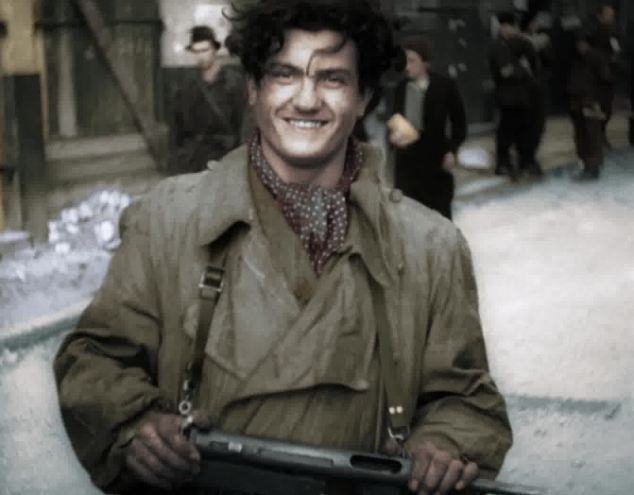World War II’s Warsaw Uprising has been given sound and colour. The Second World War footage that was shot in black-and-white with no audio has been made into a captivating feature film by adding audio and colour. The images were recorded during the Warsaw Uprising against the Nazi army in 1944.
The film was created from the spellbinding stories of the violent house-to-house combat against the German army that started on August 1 and lasted for 63 days. The battle ended because the rebels surrendered to the Nazis who had succeeded in killing about 200,000 residents and insurgents. The Nazis were already occupying Poland for about five years when the insurgent took place.
Entitled Warsaw Rising, the movie captures the activities of the team that were sent by the Polish resistance Home Army to go through the city and record the Second World Waruprising.
The entire movie is made up of images from the real people of then. The only fictional element that was added to it is the fictitious voice over storyline that gave it life and patched the footage together.
Two brothers were tasked with searching through the streets of Warsaw to capture the 1944 insurgence of the inhabitants of Warsaw against their Nazi Germany’s occupiers, making remarks on what they observed, from scenes of wreckages to soup kitchens.
To make the film more appealing with today’s technological advancement in filmmaking, the Warsaw Rising Museum engaged the services of Cinematographers who added colour and sound to the black and white voiceless Second World War footage. The editing gave the film a real-life feel in combination with a refined, fast-paced storytelling.
To celebrate this year’s anniversary of the lost struggle, the movie trailer was released by the museum. In addition, the film’s trailer was also published on the museum’s website to help them locate some of the people that were featured in the movie. The effort paid off as some of them had been identified and still alive.
One of the people featured in the film is Witold Kiezun. He was taped smiling while wearing a trophy German helmet and uniform. He was also carrying with him, a machine gun and ammunition that were captured from the Nazi. Now aged 91, the former Second World War fighter is a professor of economics and management in Warsaw.
Kiezun, who worked with the UN in Burundi, said he was returning to their based when he was approached by the recording team to film him. He said the reason he was smiling in the video was because he was very happy they won one of the battles and seized the machine gun he was toting, which according to him, was a “precious trophy”. He also said he had a lot of grenades in the bag he was carrying.
The 90-minute feature film took about 2 years for film specialists and museum historians to create the storyline, conversations as well as matching audio and song.
Because authenticity was an important element of making the movie, the film makers made sure sound at a firing range shooting from similar types of ammunitions seen in the movie were recorded and used.
Lip-reading specialists were also called in to study the footage and guess what the people were saying so the actors could be given a voice. Surviving Second World War fighters were also consulted by historians who studied thousands of old images to recreate the right colours and shades of every apparel, item, as well as place.
The insurgents did not allow the death and disorder around them take away their laughter and spirit of camaraderie. One rebel was captured spreading his arms in a seemingly fake hopelessness over the condition of his socks; another was waving a sword with a naive, gallant enthusiasm.
Speaking about the film’s realness, museum historian Piotr Sliwowski said those who wept in the movie were really crying while those that were happy, were happy for real. He added that people, who died in the film, were also dead for real.
The uprising began because members of the undercover Home Army and young Warsaw residents wanted to take over the control of their city before the Soviet Red Army get hold of it and place Warsaw under a similarly despised government. But because they were poorly armed, received no assistance or supplies, they surrendered after two months of struggling, the Mail Online reports.
As a result, the Nazis dealt them a brutal punishment by sending survivors to death camps, amongst which was Auschwitz and demolished most of the city during the Second World War.
Oldakowski, who came with the idea of adding sound and colour to the film, said they made the decision to communicate the facts and make it modern by getting rid of the black-and-white colour problem. And according to him, the inspiration came from his son that queried him about the reason individuals in black-and-white revolt films are dark-faced.
